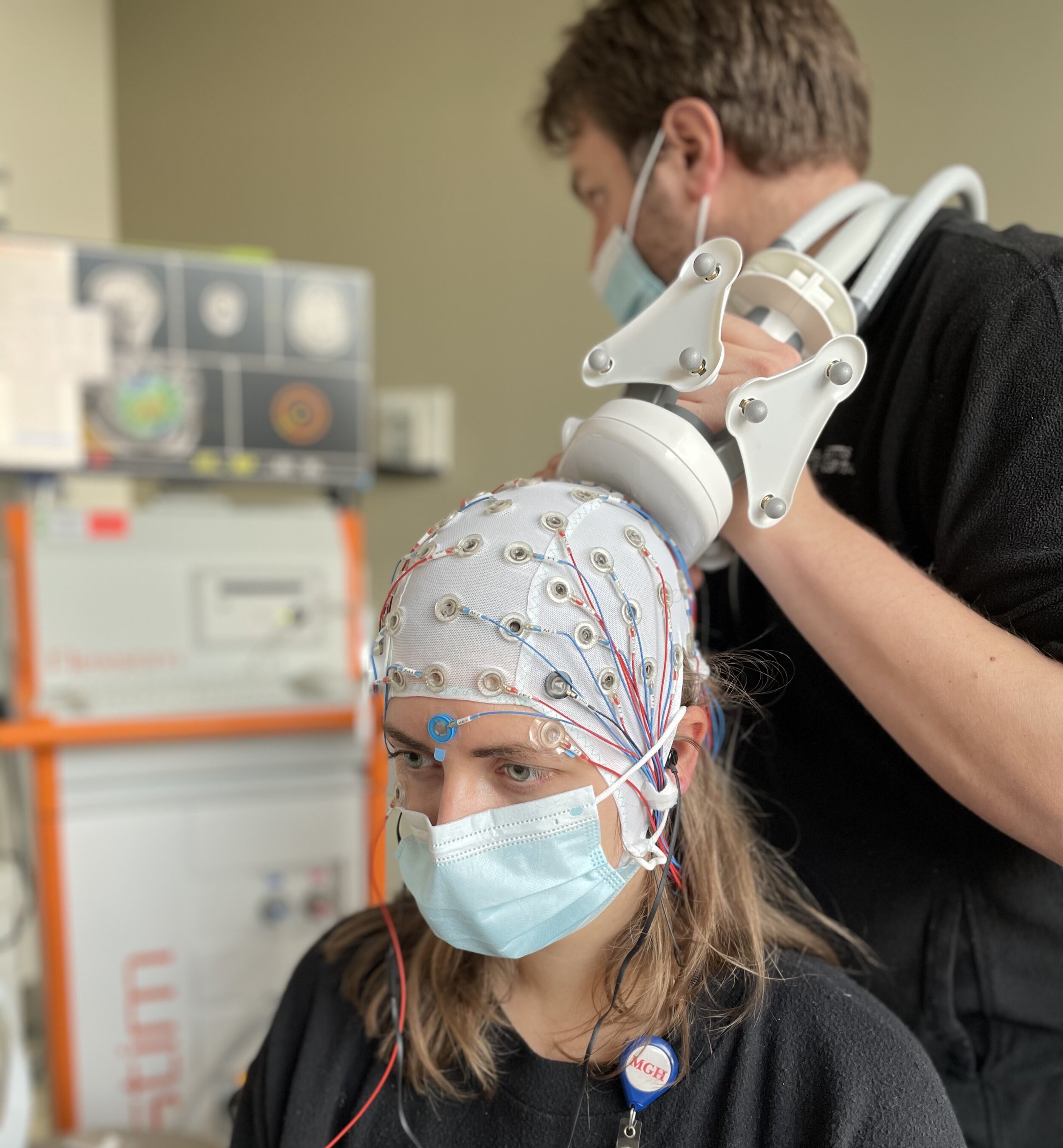TMS-EEG
Navigated Transcranial Magnetic Stimulation (TMS) in combination with high-density electroencephalography (hd-EEG) is a non-invasive technique that allows the direct perturbation of a chosen cortical region and the recording of the brain’s response with a good spatiotemporal resolution.
In the past years, TMS-EEG has been applied in different experimental conditions, such as during the transition from wakefulness to deep sleep, when consciousness fades, during anesthesia, and eventually in patients with disorders of consciousness (DoC). Changes in TMS evoked EEG responses, quantified through the Perturbational Complexity Index (PCI), has been demonstrated to distinguish conscious from unconscious states well enough to be used on an individual basis.
The NICC lab aims to implement this technique in the intensive care unit environment to detect covert consciousness in patients diagnosed with DoC and test whether PCI can predict long-term functional outcomes.
Selected TMS-EEG Publications
Edlow BL, Fecchio M, Bodien YG, Comanducci A, Rosanova M, Casarotto S, Young MJ, Li J, Dougherty DD, Koch C, Tononi G, Massimini M, Boly M. Measuring consciousness in the intensive care unit. Neurocritical Care. 2023;38:584-590. [PubMed] [Altmetric]
Young MJ, Fecchio M, Bodien YG, Edlow BL. Covert cortical processing: A diagnosis in search of a definition. Neuroscience of Consciousness. 2024;niad026. PMCID PMC10849751. [PubMed]
Young MJ, Edlow BL, Bodien YG. Covert Consciousness. NeuroRehabilitation. 2024;54:23-42. PMCID PMC10898447. [PubMed]
Monti MM, Spivak NM, Edlow BL, Bodien YG. What is a minimal clinically important difference for clinical trials in patients with Disorders of Consciousness? A novel probabilistic approach. PLOS ONE. 2023;18:e0290290. PMCID PMC10449161. [PubMed]
